
REGISTRATION
Please note that our conference Colour Connections concluded on March 21, 2021. However CSA Members and nonmembers who only require access to the video recordings can continue to register and pay on this page. These video recordings will be made available as soon as possible after the conference.
Registration for the whole conference entitles you to FREE membership of the Colour Society of Australia from the end of the conference to June 2022 (normally $88 full/ $47 concession annually). Benefits of 2021-2022 membership include access to video recordings and other resources from previous and new events in the Members' Area of the CSA website. Registrants will be given the opportunity to opt out of their free upgrade to CSA membership when this is implemented after the conference.
Three levels of registration are publicly available on this page for participants who require access to the live presentations and/or recordings for the whole conference. :
1. WHOLE CONFERENCE - Nonmembers – $100.00
2. WHOLE CONFERENCE - Current CSA members – $90.00
3. WHOLE CONFERENCE - Full-time student/pensioner concession – $50.00
Registration for the whole conference entitles you to FREE membership of the Colour Society of Australia from the end of the conference to June 2022 (normally $88 full/ $47 concession annually). Benefits of 2021-2022 membership include access to video recordings and other resources from previous and new events in the Members' Area of the CSA website. Registrants will be given the opportunity to opt out of their free upgrade to CSA membership when this is implemented after the conference.
Registration for single days (Friday, Saturday or Sunday) is also available. Registration for single days includes access to video recordings for that day but does not include free CSA membership for 2021-2022. Three levels of single-day registration are available:
1. SINGLE DAY - Nonmembers – $50.00
2. SINGLE DAY - Current CSA members – $45.00
3. SINGLE DAY - Full-time student/pensioner concession – $25.00
To register for a single day please follow these links:
FRIDAY ONLY: https://coloursociety.org.au/event-4160481
SATURDAY ONLY: https://coloursociety.org.au/event-4160498
SUNDAY ONLY: https://coloursociety.org.au/event-4160511
All prices are in Australian dollars. Zoom links and a pdf volume of abstracts will be emailed to registrants shortly before the conference.
INVITATION
On behalf of the Colour Society of Australia, the Organising Committee of the CSA National Conference Sydney 2021 would like to invite you to attend our conference on the theme COLOUR CONNECTIONS.
Our conference is timed to conclude on AIC International Colour Day on March 21, and will be our celebration of this event for 2021. The adoption of an international day of colour was proposed in 2008 by the Portuguese Color Association, whose president, Maria João Durão, presented the idea to our parent organization the International Colour Association for approval in 2009 at the 11th AIC Congress in Sydney. We are honoured to have Maria João Durão presenting a history of AIC International Colour Day at our conference.

Important dates
| First circular and call for abstracts |
04 June 2020 |
| Submission deadline for abstracts |
25 September 2020 |
| Notification of oral/poster presentation |
02 November 2020 |
| Registration opens |
08 February 2021 |
| Conference dates |
19-21 March 2021 |
About the conference theme
The theme Colour Connections acknowledges the importance of multidisciplinary approaches to colour in this era of ever-narrowing specialization. Speakers were invited to consider how their own work involving colour may be of interest and of importance in other disciplines, or to critically contrast and perhaps reconcile different specialized approaches to colour within their own discipline. We encouraged participation from designers, artists and other colour practitioners whose work references scientific or philosophical understanding of colour, from colour educators whose teaching programs span the art-science divide, and from scientific, historical and other researchers who believe that their insights about colour have relevance beyond their specialized areas of interest. We thank our speakers for their overwhelmingly generous response which has allowed us to present such a large and diverse program.
Promotion
Please help us to publicize our conference by passing on the link to this webpage to your contacts, by sharing our social media posts on the CSA Facebook and Instagram pages, and by distributing or putting up copies of our poster (designed by Kerry O'Donnell)..
Conference web page: https://coloursociety.org.au/event-4165226
CSA Facebook page: https://www.facebook.com/ColourSocietyofAustralia
CSA Instagram page: https://www.instagram.com/colour.society.australia/
Colour Connections Conference poster pdf
Video Recordings
Video recordings of presentations at the conference will be made available to CSA member and nonmember registrants shortly after the conference, and later will be made available during the July 2021-June 2022 membership year to all CSA members financial for that year.
CONFERENCE SCHEDULE
Please note that our schedule of speakers set out below may be subject to change without notice due to circumstances beyond our control. An overview of the conference schedule at a glance is available at https://coloursociety.org.au/event-3844772.
The pdf volume of abstracts can be downloaded here.
All times are AEDT (Australian Eastern Daylight Time), UTC+11:00.
Friday March 19
9.45 am Conference Committee Welcome
History of Colour Theory and Practice
10.00 am Renzo Shamey (USA), Colour Pioneers of the Islamic Golden Age
10.30 am Patrick Baty (UK), Nature’s Palette: A Color Reference System from the Natural World
11.00 am QUESTIONS/BREAK
11.30 am Liz Coats (ACT), An Early Modernist Experiment with Colour Perception
12.00 pm Michael Lech (NSW), At Home with Colour: an Introduction to the Colour Resources at the Caroline Simpson Library & Research Collection
12.30 pm QUESTIONS/DISCUSSION
1.00 pm LUNCH BREAK
Colour Science and Lighting Technology
2.00 pm Stephen Dain (NSW), Blue Light: Nasty or Nice?
2.30 pm Wendy Davis (NSW), Leveraging Colour to Reduce the Energy Consumed by Lighting
3.00 pm QUESTIONS/BREAK
Philosophy of Colour
3.30 pm Derek Brown (UK), The Reality of Colour Illusion and Nearby Misperceptions
4.00 pm Barry Maund (WA), The Richness of Illusions of Colour
4.30 pm QUESTIONS/DISCUSSION
Colour in Light Art
5.00 pm Aly Indermühle (NSW), Luminous Colour - the Enchantment of Light Art
5.30 pm QUESTIONS and CLOSE

Renzo Shamey (USA),, Colour Pioneers of the Islamic Golden Age
Renzo Shamey is the CIBA professor and Director of the Color Science and Imaging Laboratories, North Carolina State University, the editor in chief of the Springer "Encyclopedia of Colour Science and Technology", and the immediate Past President of our american sister organization, the Inter Society Color Council. His current research areas include color perception including unique hues, examination of blackness, grayness, and whiteness and small color differences.
Renzo's presentaion "Pioneers of Color Science in the Islamic Golden Age (8-13th C AD)" is based on a chapter from his recent book co-authored with Rolf Kuehni, “Pioneers of Color Science” (Springer, 2020). During the Golden Age of Islam, Arab and Persian scholars, as well as scholars from other countries, were able to build on the information they translated from the Greeks and others and forged new advances in many fields. The work of these scholars on color involved assessing gemstones, plants and the rainbow, and advanced understanding of vision, optics and astronomy.
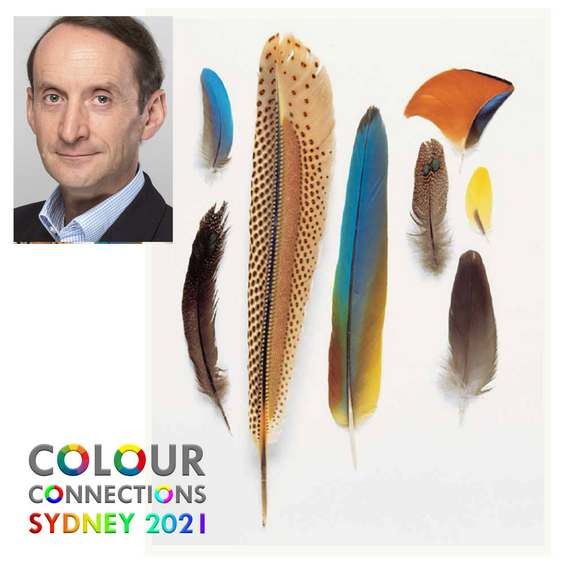
Patrick Baty (UK), Nature's Palette
Patrick Syme’s editions of "Werner’s Nomenclature of Colours" (1814, 1821) attempted to establish a universal colour reference system to help identify, classify and represent species from the natural world. In spite of its small size and scope, it proved invaluable to artists, zoologists, botanists, mineralogists and anatomists, and it is important for being the first of a series of colour reference systems that led to much bigger things. At "Colour Connections" Patrick Baty (UK) will talk about his new book "Nature's Palette", in which Syme's work has, for the first time, been enhanced with the addition of illustrations of the animals, vegetables and minerals that Werner referenced alongside each colour swatch.
Patrick Baty is a leading specialist in the use of paint and colour in historic buildings who has consulted on countless restoration projects, including Hampton Court Palace, Stowe, Tower Bridge and the Royal Festival Hall and numerous other sites in the UK, and the Metropolitan Museum of Art, Historic Charleston, Monticello, Colonial Williamsburg and the Tryon Palace in the USA. He is also noted as the author of the magnificent book "The Anatomy of Colour", an illustrated history of heritage paints, pigments and colour.
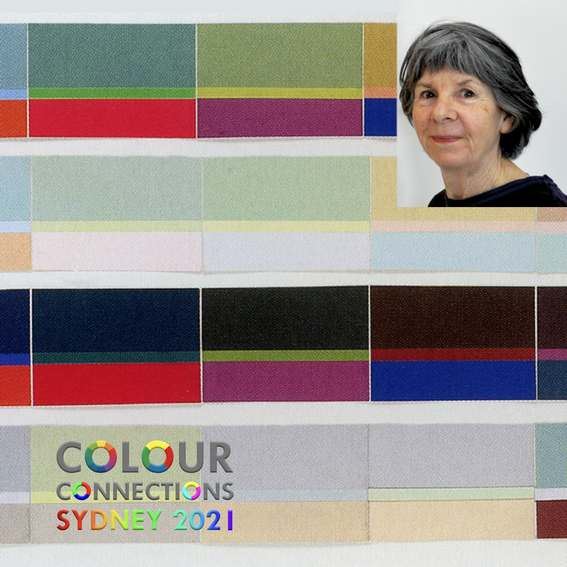
Liz Coats (NSW, An early Modernist Experiment with Colour Perception
Dr Liz Coats is an abstract colour painter who has exhibited regularly since the mid-1970s in numerous galleries around Australia and internationally. In 2012 she completed a doctorate at the School of Art (ANU) including an exegesis on "Organic growth and form in abstract painting". Liz has been awarded numerous prizes and grants as well as fifteen Australian and international artists' residencies. An inclusive work history can be found at: www.lizcoats.com.au.
In her talk “An Early Modernist Experiment with Colour Perception”, Liz will explore some little-known research into colour perception by the Russian artist, Mikhail Matyushin (1861-1934). Matyushin speculated on humans’ potential for expanding the periphery of vision, and proposed that the sensory body could be modified and strengthened with visual exercises. In 1933, with assistance from his students, he published a reference book of hand-painted colour samples to document their discoveries. While their conclusions were far-reaching, to avoid censorship and persecution the book was promoted to architects and designers as a guide to selecting harmonious colour schemes in buildings.

Michael Lech (NSW), At Home with Colour: an Introduction to the Colour Resources at the Caroline Simpson Library & Research Collection
Michael Lech, curator of the Caroline Simpson Library & Research Collection (CSL&RC) at Sydney Living Museums, will give a presentation on the colour resources of the CSL&RC, titled "At Home with Colour". The CSL&RC is a specialist library with a focus on the history of house and garden design and interior furnishing in Australia. The collection includes historic furnishing samples, trade catalogues and sample books, personal papers and manuscripts, pictures and photographs. Color-related resources in the collection include many rare and unique items from the 19th and 20th centuries, including textile samples, original furnishing designs, paint charts, and specialist colour reference sources for home interiors.
Michael Lech has written on various aspects of the history of houses, interiors and domestic furnishings in Australia, including a book on the extensive wallpaper collection at the CSL&RC. He curated the exhibition, "Marion Hall Best: Interiors", and co-curated with Megan Martin, "Dream Home Small Home", on Australia’s housing crisis following World War II. Michael is also engaged in ongoing research into the rise and development of Australia’s department stores and furnishing trade.
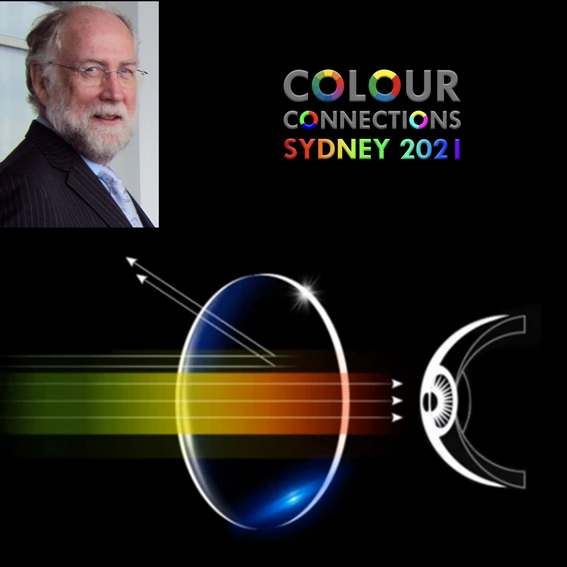
Stephen Dain (NSW), Blue Light: Nasty or Nice?
Emeritus Professor Stephen John Dain is a former Director of ORLAB, a self-sustaining test, calibration and research facility within the School of Optometry and Vision Science at UNSW. Stephen is founding member and an Honorary Life Member of the Colour Society of Australia. He has had a distinguished research career specializing in vision & video display unit (VDU) operators, eyes & vision in industry, eye protection, ultra violet (UV) effects on eyes, colour vision and eye disease, colour vision deficiencies and lighting. He will be speaking at Colour Connections on "Blue Light, Nasty or Nice?"!
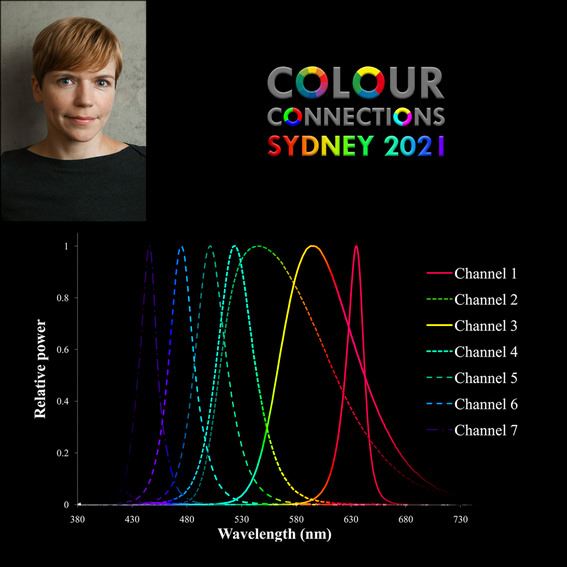
Wendy Davis (NSW), Leveraging Colour to Reduce the Energy Consumed by Lighting
Wendy Davis is an Associate Professor in Lighting and Director of Illumination Design in the School of Architecture, Design and Planning at the University of Sydney, where she leads a lighting design master’s program and a research group investigating ways that emerging technologies can be used to better illuminate architectural spaces. She previously spent seven years as a Vision Scientist at the National Institute of Standards and Technology. Wendy earned her Ph.D. and M.S. degrees from the University of California, Berkeley in vision science, after completing her B.A. in psychology and physiology at the University of Minnesota.
Wendy's presentation "Leveraging Colour to Reduce the Energy Consumed by Lighting" will invite colour experts from all disciplines to consider (and hopefully share!) the ways in which their knowledge, understanding, and experience with colour could be used in the development of new approaches to lighting design.
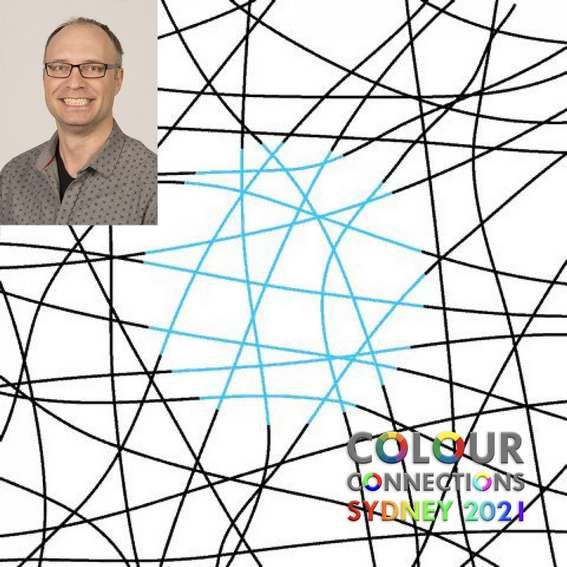
Derek Brown (UK), The Reality of Colour Illusion and Nearby Misperceptions
Derek H. Brown is a Senior Lecturer in the Centre for the Study of Perceptual Experience and Department of Philosophy at the University of Glasgow. He works in philosophy of mind and perception, with particular interests in philosophy of colour, perceptual constancies, ‘indirect’ approaches to perception, imagination, projection in perception, and perceptual demonstratives. He recently co-edited, with Fiona Macpherson, "The Routledge Handbook on the Philosophy of Colour". In his presentation "The Reality of Colour Illusion and Nearby Misperceptions", Derek will argue that some so-called colour illusions deserve to be classified as such and some do not, and will begin to outline a theory of colour illusion that accommodates this picture.
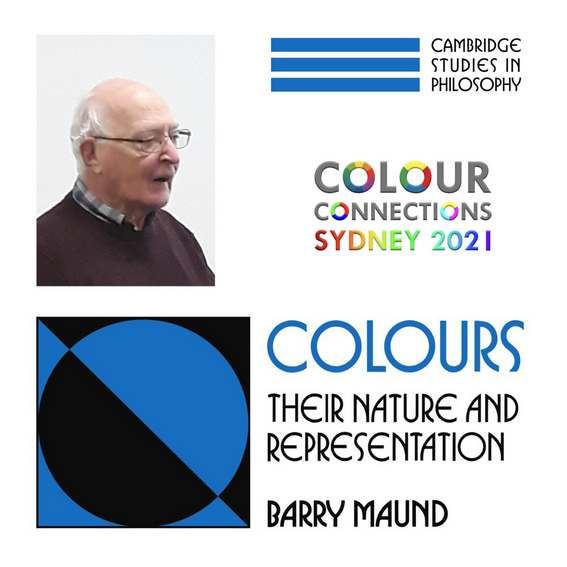
Barry Maund (WA), The Richness of Illusions of Colour
Barry Maund is Senior Honorary Research Fellow in Philosophy at the University of Western Australia and is a leading authority on the philosophy of colour. Among his many influential writings are his books “Colours: Their Nature and Representation” (Cambridge University Press, 2009) and “Perception” (Acumen, 2013), and his entry “Color” in the “Stanford Encyclopaedia of Philosophy”.
Barry’s presentation “The Richness of Illusions of Colour” is a lucid discussion examining different ways in which something can be said to be an “illusion” and conversely, different ways of being real. In making these distinctions he develops a positive aspect of a view of colour favoured by scientists but resisted by many philosophers.
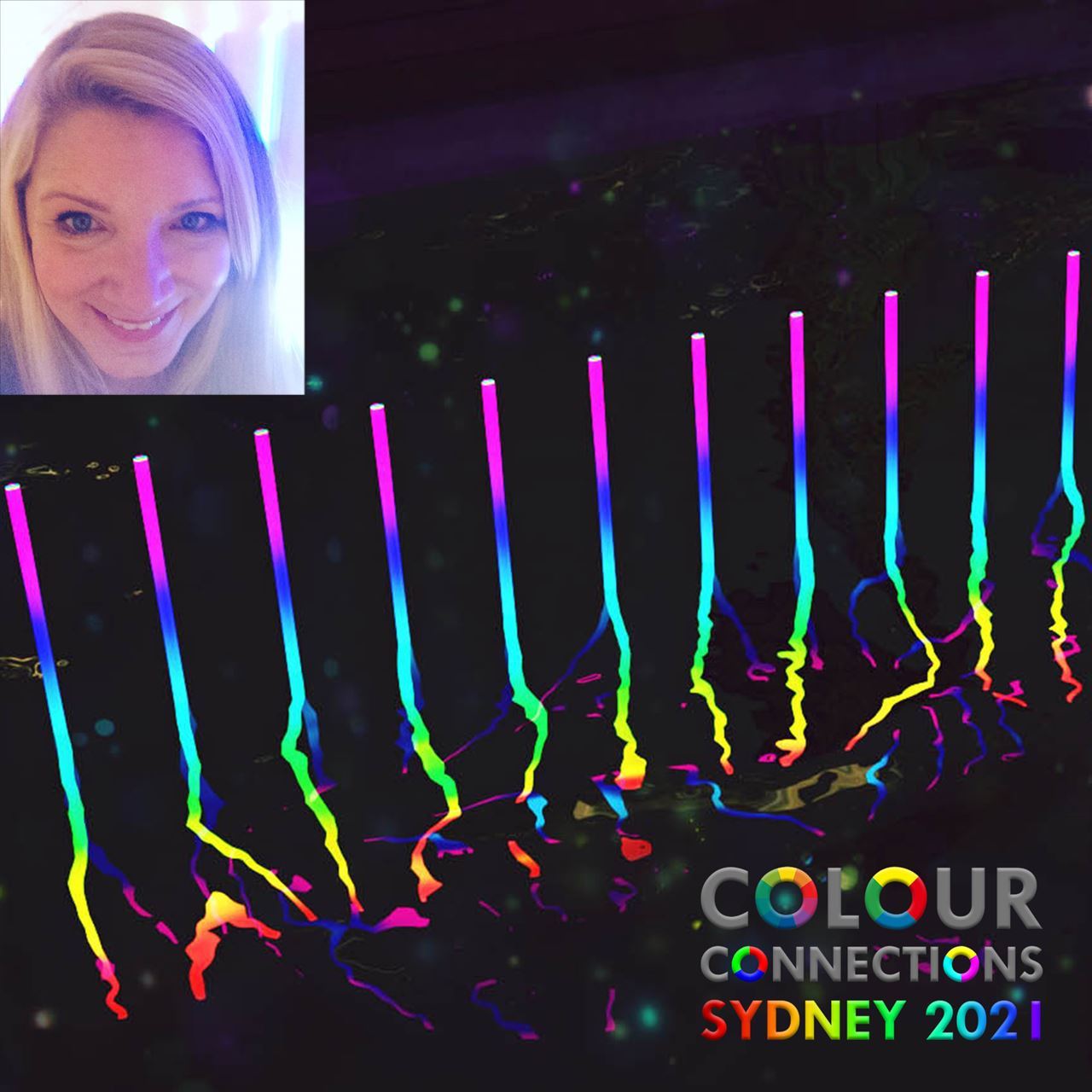
Aly Indermühle (NSW), Luminous Colour - the Enchantment of Light Art
Aly Indermühle's talk “Luminous Colour - the enchantment of light art” is an illustrated overview of contemporary light art exploring the global popularity of the medium and why it continues to captivate the public.
Aly’s career has spanned multiple elements of film and television production to include 3D animation, artistic creation, sculpture, lighting, texturing and theme park design. She now focuses on sculpture and art Installations in her artistic practice, which encompasses large-scale publicly displayed artwork as seen in VIVID Sydney and The Australian Open to smaller more intimate light works for the private sphere.
Saturday March 20
Fundamentals of Colour
10.00 am David Briggs (NSW), Four Key Insights about Colour
Colour in Painting
10.30 am Andrew Werth (USA), Using Color Effects in Service of an Artistic Vision
11.00 am QUESTIONS/BREAK
11.30 am Ron Francis (TAS), Calculating Colour in Imaginative Realist Painting
12.00 pm Andrew Bonneau (QLD), Conceptual and Empirical Approaches to Colour in Realist Painting
12.30 pm QUESTIONS/ DISCUSSION
1.00 pm LUNCH BREAK
Colour in Digital Imaging
2.00 pm Chelsea Lehmann (NSW), The Aesthetics of the Technological Image
2.30 pm Simon Ives (NSW), Streeton’s Lost Landscape
3.00 pm QUESTIONS/BREAK
3.30 pm Tony Vladusich (QLD), Colours - One: A Photo Editing App Based on Human Colour Vision
Painting Materials
4.00 pm David Coles (VIC), Response to Demand - Colour Makers’ Ongoing Dialogue with Artists
4.30 pm QUESTIONS/DISCUSSION
Phenomenology of Colour
5.00 pm Joaquim Santos (Portugal), Phenomenology of Colour. Towards an Extensive Cultural Paradigm - paradeigma
5.30 pm QUESTIONS and CLOSE
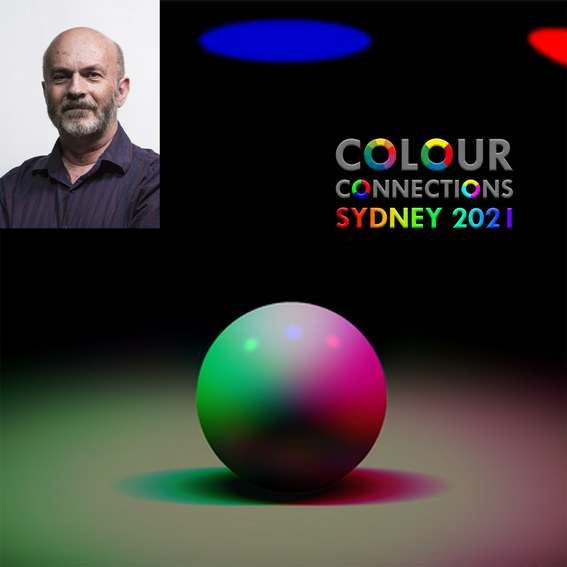
David Briggs (NSW), Four Key Insights about Colour
"The colour that we see a light or an object as having is not a physical property. It is the way in which we perceive a physical property - the overall amounts of long, middle, and short wavelengths present in the light or that the object is disposed to reflect – subject to both the state of the observer and the viewing conditions."
"Just three attributes, such as hue, lightness and chroma, are sufficient to describe the colours of objects, but other colour attributes are needed to describe colours of lights, to fully describe colour in a scene, and to highlight other relationships among object colour perceptions: these other attributes include brightness, colourfulness, saturation (s. str.), brilliance/blackness and whiteness." - Extracts from David Briggs' presentation.
David Briggs is President and NSW Divisional Chair of the CSA, and is a committee member of the ISCC/AIC Colour Literacy Project and CIE Technical Committee 1-99. His publications include a chapter in the Routledge Handbook of Philosophy of Colour (2020) and his outreach websites The Dimensions of Colour and Colour Online. He teaches at the National Art School, the Julian Ashton Art School and the University of Technology, Sydney.

Andrew Werth (USA), Using Color Effects in Service of an Artistic Vision
In his talk "Using Color Effects in Service of an Artistic Vision", painter Andrew Werth will describe how he uses color effects including chromostereopsis, optical mixing, color assimilation, and simultaneous contrast at various scales in service of his artistic vision. Color is one of the essential tools in any visual artist’s tool kit, but when one’s artistic inspirations are cognitive science and philosophy of mind, color usage becomes a part of the subject matter itself.
Andrew Werth (USA) is an abstract painter whose paintings are usually about ideas of the Self, consciousness, and making sense of reality. He has been exhibiting regularly at galleries throughout the New Jersey, New York and Pennsylvania area for more than fifteen years. After a first career as a software engineer with formal degrees from Carnegie Mellon University in Computer Engineering and Information Networking, he studied at many of the arts institutions in New York City, including the School of Visual Arts, The New School, and the Art Students League.

Ron Francis (TAS), Calculating Colour for Imaginative Realist Painting
“I work mostly from imagination, inventing scenes and trying to make them as real as I can. This causes me to study how things work in the natural world, particularly how light interacts with objects and environments, so I can more easily recreate it on canvas. Subjects vary considerably from one painting to the next, ranging from recreating past events or dreams, to comments about what I may find odd or ironic about things people do.” - Ron Francis
Ron Francis is a self-trained, Tasmanian-based painter who has exhibited since 1980. After a long stretch painting trompe-l'œil murals from 1988 to 2006 he returned to fine art painting. Ron now exhibits with Scott Livesey Gallery, Melbourne, and a selection of his haunting paintings can be seen on his website at http://www.ronaldfrancis.com/'
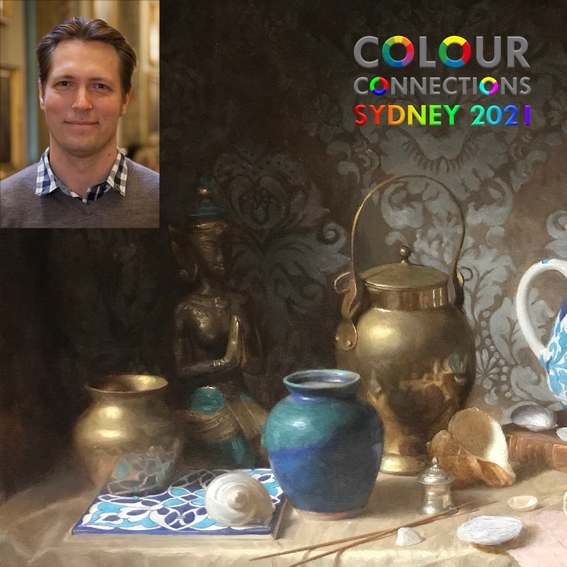
Andrew Bonneau (QLD), Conceptual and Empirical Approaches to Colour in Realist Painting
Andrew Bonneau will explore some of the differences between an empirical and a conceptual approach to drawing and painting from life, which has implications for how the artist understands hue, value and chroma. Although both approaches can give a satisfying result and a convincing illusion of form and space, Andrew will investigate some of the philosophical differences between these two ways of looking at the world and the subtle differences in result that they reveal.
Tasmanian-born painter Andrew Bonneau lives and works in Cairns, Qld. He studied at the National Art School, the Charlie Sheard Studio School and the Julian Ashton Art School in Sydney, and for three years under Jacob Collins at the Grand Central Academy of Art in New York. He has been selected as finalist for many national painting awards including the Adelaide Perry Drawing Prize, the AME Bale Travelling Art Scholarship (three times}, the Moran Portrait Prize (three times) and the Archibald Prize, and has been commissioned by the National Portrait Gallery in Canberra. http://www.andrewbonneauart.com/index.html

Chelsea Lehmann (NSW), The Aesthetics of the Technological Image
Chelsea Lehmann is a Lecturer in Drawing at the National Art School and completed her PhD at UNSW Art & Design in 2019 on the topic "The articulate surface : painting and the latent image". In her presentation Chelsea will explore some of the ways that advanced imaging technologies and their outcomes can present, instigate, or even ‘be’ art, by responding to selected examples of technological imaging applied to significant historical artworks.
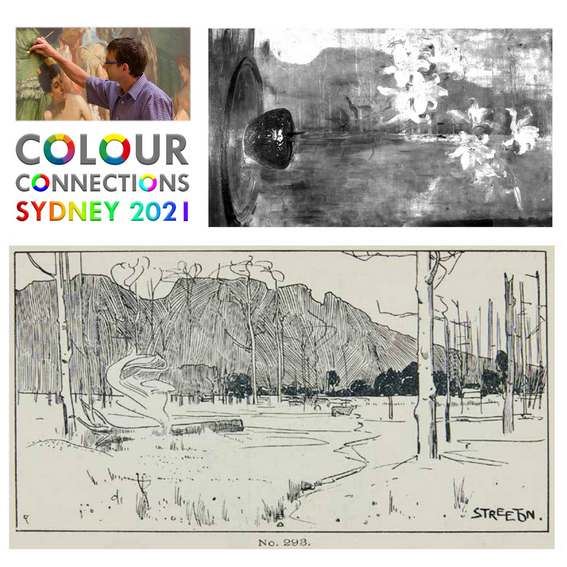
Simon Ives (NSW), Streeton’s Lost Landscape
Simon Ives is a Paintings Conservator at the Art Gallery of New South Wales and has also worked at the Tate Gallery in London and the National Gallery of Australia. He holds a Masters in Fine Art Conservation specializing in easel paintings from the University of Northumbria (UK) in 1994. Simon has written articles on artists materials and techniques for a range of publications and is interested in innovative digital presentation of conservation analysis. Simon’s presentation “Streeton’s Lost Landscape” tells the story of the restoration of Arthur Streeton’s major early painting “Gloucester Buckets (sunny)” (1894) and the rediscovery of its lost companion painting, “Gloucester Buckets (grey)”, beneath a floral still life painted by Streeton in 1909.
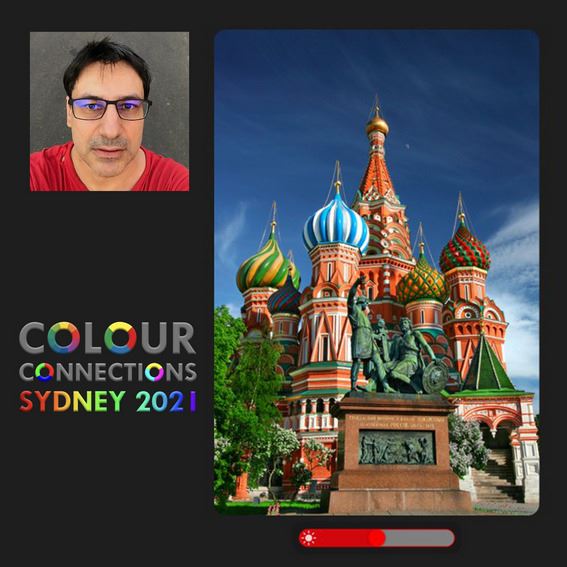
Tony Vladusich (QLD), Colours - One: A Photo Editing App Based on Human Colour Vision
Before switching to software development in 2016, Tony Vladusich worked as a computational neuroscientist in Australia, Europe and the US (Boston University and Brandeis University), researching the computational foundations of human color perception. He published a series of 6 papers between 2012-2015 on his theory of gamut relativity, which provided a unified account of many phenomena in brightness, lightness, gloss & transparency perception. In his talk "Colours - One: A Photo Editing App Based on Human Colour Vision" he will discuss his new app for the Apple ecosystem that represents an extension of the central ideas of gamut relativity to the perceptual dimensions underlying lightness, hue and saturation perception.

David Coles (VIC), Response to Demand - Colour Makers’ Ongoing Dialogue with Artists
David Coles is the founder and Managing Director of Langridge Artist Colours in Melbourne and author of 'Chromatopia, an Illustrated History of Colour' (Thames & Hudson, 2018). David studied Fine Art (Painting) at Bristol in the UK and then worked in London for the renowned art materials suppliers Cornelissen & Sons and Roberson & Company. He arrived in Australia in 1990 on holiday and two years later founded Langridge, now one of the world’s most respected makers of artists’ oil paints.
David's presentation “Response to demand - Colour makers’ ongoing dialogue with artists” will discuss the impact on contemporary colour perception of digital devices, the resulting demands from artists for paints having equivalent colours, and how paint makers respond to these demands.

Joaquim Santos (Portugal), Phenomenology of Colour. Towards an Extensive Cultural Paradigm - paradeigma
Joaquim Marcelino Santos is a Professor at the Lusiada University, Faculty of Architecture and Arts, Lisbon, where he lectures in History of Art and Theory of Architecture. He is also a research fellow at the Center for Research in Territory, Architecture, and Design (CITAD), where he incorporates the research group on Architecture and Design and the Colour Laboratory. Joaquim holds a PhD from Tampere University of Technology, Finland, where he wrote his dissertation on the iconic work of the Finnish architect, Alvar Aalto. He has presented papers and posters at the AIC Congress 2013 Newcastle upon Tyne, AIC 2018 Lisboa and AIC 2020 Avignon.
One of Joaquim’s main areas of research interest is the phenomenology of colour, and we are honoured to have him present at Colour Connections on the topic "Colour: Towards an Extensive Cultural Paradigm – Paradeigma".
Sunday March 21
Colour Education
10.00 am Ingrid Calvo Ivanovic (Italy), A Study to 100+ Colour Courses for Design Education Taught during 2010-2020
10.30 am Ingrid Calvo Ivanovic (Italy), Observation, Reflection and Collaboration - Colour Design Training Itinerary, a Framework for the Future of Colour Education
11.00 am QUESTIONS/BREAK
11.30 am Craig Kirkwood (UK), We don’t know Jack about Hue – the Colour Knowledge Survey
12.00 pm Maggie Maggio (USA) and Robert Hirschler (Hungary), Update on the ISCC/AIC Joint Color Literacy Project
12.30 pm QUESTIONS/ DISCUSSION
1.00 pm LUNCH BREAK
2.00 pm Juliet Albany (WA), Seeing the Colours of Home - A Primary School Resource Tool for Teachers
2.30 pm Paul Green-Armytage (WA), Colour Clues - A Colour Communication Game (long session),
3.15 pm QUESTIONS/BREAK
3.45 pm Eva Fay (NSW), Colour Education from the Shillito Design School, Sydney
4.15 pm Maria João Durão (Portugal), Celebrating the Harmony of Our Identities on the 'International Colour Day'
4.45 pm QUESTIONS/DISCUSSION and CLOSE OF CONFERENCE

Ingrid Calvo Ivanovic (Chile), A Study to 100+ Colour Courses for Design Education Taught during 2010-2020 and Observation, Reflection and Collaboration - Colour Design Training Itinerary, a Framework for the Future of Colour Education
Most colour educators work in a non-collaborative setting, on a limited budget, and with limited time and resources in the classroom. There is a lack of affordable didactic materials to complement teaching, and of innovative and updated student-centred training methods. In addition, some teachers have access to only limited colour knowledge, much of which is superficial and outdated.
Ingrid Calvo Ivanovic will give two presentations that relate to her doctoral research at the Politecnico di Milano, which proposes the development of a "Colour Design Training Itinerary" (CDTI), as a complete educational framework for the improvement of the teaching and learning of colour in the design discipline. The CDTI framework is being built through consultation, involvement and collaboration with colour teachers from different countries and backgrounds.
Ingrid has been a full-time researcher in the field of colour for more than ten years. She is Assistant Professor in the Design Department of the University of Chile, a Member of the Editorial Board of Color Research & Application, and is active on numerous committees of the AIC, including as President of the Scientific Committee of the AIC2016 Interim Meeting: Colour in Urban Life".
If you teach colour and would like to contribute to Ingrid's Archive of Colour Teaching and Learning Activities by sharing one – or more – of your successful colour exercises, please click here: http://tinyurl.com/m2haqz5u

Craig Kirkwood (UK), We don’t know Jack about Hue – the Colour Knowledge Survey
Craig Kirkwood has held senior positions with IBM, National Semiconductor, Roland and the Australian Film and Television School, and was the founder and managing director of Fearless Media, from 1999 to 2011 Australia’s leading Adobe Training Provider with facilities in every Australian capital. In his presentation "We don’t know Jack about Hue", Craig will talk about the Colour Knowledge Survey he designed to help determine the level of understanding of colour in both the general community and those with a professional or academic interest in colour. The survey forms a central pillar of Craig's doctoral research at Cardiff Metropolitan University into the development of a new, open, colour system, Lingua Colour, that aims to better serve the needs of creative professionals and educators working across both digital and ‘real-world’ physical media. Please read about Craig's project and take the survey at https://linguacolour.com/

Maggie Maggio (USA) and Robert Hirschler (Hungary), Colour Literacy Project Stage 2
The long-term goal of the ISCC/AIC Color Literacy Project (CLP) is to provide an online color resource center with foundational educational material for teachers from kindergarten to university. This inter-disciplinary project was approved by the US Inter-Society Color Council in the summer of 2019, and by the International Colour Association in January of 2020. The first phase, including research into existing materials and resources and identification of core topics for color education at all levels, concluded in 2020.
The goal of Phase Two of the CLP, launched in January of this year, is to engage teachers in the process of evaluating new and existing materials for the future resource center. Chair and Co-chair of the CLP, Maggie Maggio and Robert Hirschler, will describe in their presentation the planning process for the first CLP professional development courses to be held later this year. Robert also chairs the AIC Study Group on Colour Education (with Maggie as Co-chair), and both have many decades of experience in colour education and in diverse aspects of colour design, colour science and colour technology.
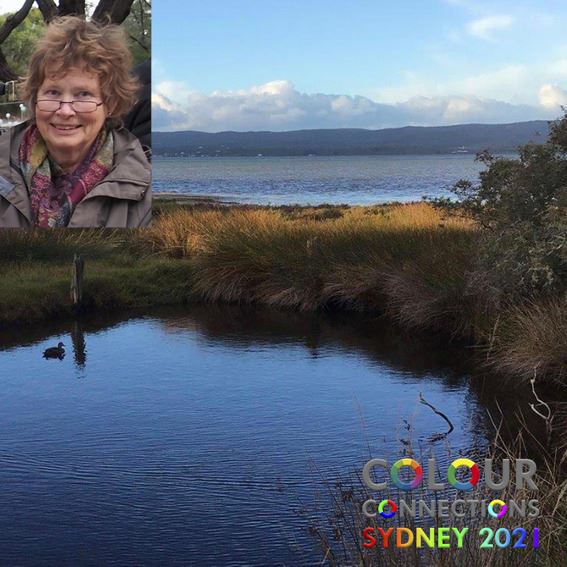
Juliet Albany (WA), Seeing the Colours of Home
Juliet Albany worked as a teacher in remote Western Australia and Manus Island before completing a Design Degree at Curtin University and graduating to practice as an Urban Designer / Town Planner for nearly 20 years, working with both State and local governments, and the City of Perth. She ran ‘Townscape’, a State program assisting with regional towns' regeneration throughout Western Australia.
Juliet's presentation "Seeing the Colours of Home" argues that seeing might be taught to give young people, particularly at primary level, confidence and understanding of their home territory. Since 2019 Juliet has been developing her idea for primary school education in presentations to the CSA Western Australian Division. This work arose from her paper "Between Glare and Abysmal Dark" presented at the 2009 AIC Congress in Sydney.
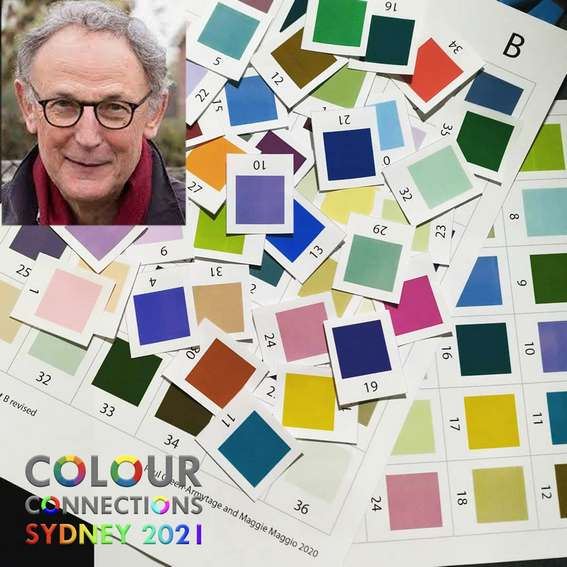
Paul Green-Armytage (WA), Colour Clues - A Colour Communication Game
Dr Paul Green-Armytage is an Associate of Curtin University in Western Australia, where he taught in the School of Design. He served as a member of the Executive Committee of the International Colour Association (AIC) and as President of the Colour Society of Australia. He retired from teaching at Curtin in 2006 but remains active as a researcher and writer, and has contributed papers at many national and international conferences. He is currently a member of the ISCC/AIC Colour Literacy Project, and at "Colour Connections" he will be conducting a colour naming game he developed with CLP Chair Maggie Maggio called "Colour Clues".
"Colour Clues" is a game, but more than a game. It is an exercise in looking, seeing, thinking and communicating. It is also a means of collecting information about the way we use words to describe colours. It was inspired, in part, by "The Colours of Babel", a card game devised by Dimitris Mylonas. The game is played by teams of two in partnership, and in competition with other partnerships. The winning partnership will be the one that has greatest success in communicating what colours are meant by the clues that each partner gives to the other.

Eva Fay (NSW), Colour Education from the Shillito Design School, Sydney
Eva Fay has taught colour and design in Sydney since 1979 at various TAFE colleges, the University of Sydney, UTS, and the School of Colour and Design, which she co-founded in 1983. She is a founding member of the Colour Society of Australia and was awarded Fellow of the Design Institute of Australia in 2012. Lately Eva has been experimenting with colour and atmosphere in painting and exhibits regularly.
In her presentation "Colour Education from The Shillito Design School, Sydney", Eva will present and describe the development and theory of colour exercises and projects that she produced as a student at the highly influential Shillito Design School in Sydney in 1976-1977. Phyllis Shillito’s eclectic curriculum borrowed progressive ideas from design schools in Ulm, Munich, Stockholm and Paris as well as from art educators H. Barrett Carpenter (UK) and Maitland Graves (USA).

Maria João Durão (Portugal), Celebrating the Harmony of Our Identities on the 'International Colour Day'
As President of the Portuguese Color Association, Maria João presented the idea of an international day of colour to our parent body the International Colour Association (AIC) for approval at the 11th AIC Congress in 2009, hosted by the Colour Society of Australia in Sydney. The congress settled on the date of March 21 for the celebration: the equinox when night and day are equal, symbolically relating to the complementary nature of light and darkness. Our national conference "Colour Connections" is timed to conclude on International Colour Day, and will be our celebration of the event for this year. Out of the 28 AIC regular members, 23 have celebrated ICD at least once, and a list of AIC ICD events for 2021 from around the world can be found on the AIC website at https://www.aic-color.org/icd-2021
Dr Maria João Durão has been a Professor at the Lisbon School of Architecture, Universidade de Lisboa since 2001. She founded, directed and lectured in the world pioneer Masters Degree Course (MPhil) "Colour in Architecture" (FAUTL); she founded "Colour Lab-FA" and has directed it since 2004, supervising national and international masters, doctoral and post-doctoral projects. She has directed the “Research Group Colour and Light” (CIAUD/School of Architecture) since 2016, and founded and presided over the Portuguese Colour Association and is its Honorary President. She is scientific Council member of the Design Doctoral Degree Course (FAUL), Doctoral Course in Architecture lecturer (FAUL) and Masters in BES (University Salford). Her art work has been exhibited since 1989 in England, France, Japan, and Portugal and belongs to public and private collections. Her publications span the areas of art, design, terrestrial and aerospace architecture.
Copyright & Legal Obligations
All information in the abstract submission, including author’s names, affiliations, authors order of listing, and the content of abstract, will be used in the conference publications. The contributor carries legal obligations of the abstract; any violation to a third party’s right will be the responsibility of the contributor him/herself.
